This was an exciting year for the McIntyre Powder Project, in which years of dedicated work saw the result of an established fund to compensate workers who became afflicted with Parkinson’s Disease due to their exposure to McIntyre Powder when working in Ontario mines. OHCOW researchers share in this success. Below are summaries of 2022/23 milestones and accomplishments for this important project. For more information, Go to the OHCOW McIntyre Project page for more information.
OHCOW Researchers Make Valuable Contributions to Study of Occupational Illness Caused by McIntyre Powder
McIntyre Powder (MP) was administered to miners for decades in Ontario mines in the belief that it prevented silicosis. OHCOW researchers have helped determine the harmful and life-long damage to miners’ health caused by preventable exposure to the substance.
The latest paper, “McIntyre Powder and its potential contributions to cardiovascular disease risk: A literature review through the McIntyre Powder historical lens,” appears in the American Journal of Industrial Medicine. Published in June of 2022, the study was published by Andrew M. Zarnke, BSc., an Occupational Hygienist at OHCOW, Sudbury; and Christine Oliver, MD, a medical consultant to OHCOW and an Adjunct Professor at the University of Toronto in the Division of Occupational and Environmental Health.
In this research Zarnke and Oliver continue their study of the period from 1943 to 1979, when mine workers in Ontario (as well as other locations throughout Canada and worldwide) were exposed to the powder in their workplace, often in high concentrations. The degree of fineness of the powder, along with its high concentration when used in the mines, resulted in a respirable dust that increased the lung dust burden of workers, causing lung disease over time. For ten minutes before every work shift, the powder was administered to miners.
Previous research by the team showed that the high airborne concentration that miners were exposed to caused lung damage, in combination with the respirable dust they breathed as they worked in the mines. Their recent study shows that, combined with the air pollution particulates already present in the environment, miners were also put at increased risk of cardiovascular disease (CVD).
Oliver and Zarnke have been studying occupational illness in miners for years. They previously wrote and co-wrote papers on sarcoidosis, an inflammatory lung disease. These papers are “Sarcoidosis: An Occupational Disease?”, published in 2021, and “Sarcoidosis in Northern Ontario hard-rock miners: A case series” published in the American Journal of Industrial Medicine in February 2022.
The research helped make the case for a strong causal association between occupational exposure to MP and lung disease, damage to the immune system, and gene-exposure interactions.
OHCOW research has significantly contributed to the medical literature that has forced insurance granting organizations, such as the WSIB in Ontario, to reconsider their previous denials of compensation for miners exposed to MP. Its impact has been felt as well in other regions where the substance was used. The research is not over, as more connections are being found between exposure to MP and neurological damage in miners.
Miners Harmed by McIntyre Powder get Official Apology

Labour Minister Monte McNaughton On November 30, 2022.
Former mine workers who were made ill from their exposure to McIntyre Powder have received an apology from Ontario Labour Minister Monte McNaughton. Thanks in large part to the spearheading of the McIntyre Powder Project by activist Janice Martell and her partnerships with OHCOW and others, the substance has been identified as having caused respiratory illness, lung disease and neurological conditions in workers. Martell was interviewed on CBC about the campaign and what the long-awaited apology means to her and injured miners.
From 1943 to 1979, miners in northern Ontario were forced to breathe in the black ground aluminum dust before they started their shifts.
McIntyre Powder is essentially ground aluminum dust, and it was administered to miners for over thirty years until 1979. The miners were told they had to take it or be fired. It was supposed to prevent lung disease, but in some cases actually ended up causing it, as well as other illnesses and irreversible neurological damage.
The Workplace Safety and Insurance Board of Ontario (WSIB) has recognized that miners forced to inhale McIntyre Powder were at a higher risk of developing Parkinson’s disease. Early in 2022, the province made the changes to allow families and miners who developed Parkinson’s tied to McIntyre Powder inhalation to file claims and be compensated for occupational disease.
Millions in Unclaimed Compensation Available for McIntyre Powder Miners
This article by Dave Wilken was originally published in Northern Ontario Business, April 6, 2023.
Despite recent policy changes by Ontario’s Workplace Safety & Insurance Board (WSIB) that make it much easier for workers exposed to McIntyre Powder aluminum dust at gold and uranium mines between 1943-1979 to claim compensation for Parkinson’s disease, only a fraction of those eligible have been compensated. The issue has now shifted from bad, outdated policy and resulting legal hassles to getting the word out about a streamlined compensation process open to McIntyre Powder-exposed Parkinson’s sufferers and their families.
Compensation can include awards for lost wages, pain and suffering, reimbursement of non-OHIP-covered medical expenses, including long-term care or assistance with daily living activities while staying at home (including from family members), a stipend to cover other expenses such as yard work and household repairs and, where the condition is fatal, funeral expenses and death benefits. These benefits are available with full retroactivity, but without an application, the money stays in the WSIB’s multi-billion-dollar investment fund and never makes it to those who have suffered the human costs of this terrible disease. The employer-funded WSIB also keeps the money that would be refunded to OHIP for costs that it did cover for these work-related conditions.
Read the entire article here.

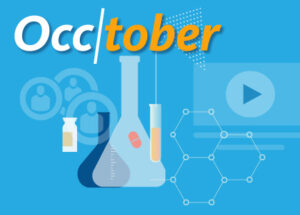 Preventing Occupational Illness/Disease is an Area of Focus in Ontario’s Prevention Works 5-year strategic plan. OHCOW leads the Occupational Illness Steering Committee (formerly the Occupational Disease Action Plan (ODAP)) aligning the efforts of the Occupational Health and Safety System and partners to reduce the incidence and burden of occupational illness/disease whether chronic/long latency or more acute/infectious.
Preventing Occupational Illness/Disease is an Area of Focus in Ontario’s Prevention Works 5-year strategic plan. OHCOW leads the Occupational Illness Steering Committee (formerly the Occupational Disease Action Plan (ODAP)) aligning the efforts of the Occupational Health and Safety System and partners to reduce the incidence and burden of occupational illness/disease whether chronic/long latency or more acute/infectious.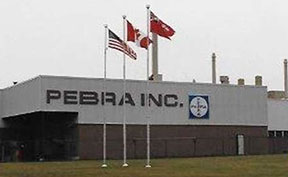 In 1981, a German firm manufacturing plastic automobile parts moved to Kitchener, Ontario in a 22,000 square-foot facility. By 1986, parts were manufactured at this plant using an innovative process called “reaction injection molding.” With production expanding, the company set up a second facility in Peterborough, which was expanded in the late 1990s to accommodate its larger thermoplastic injection molding machines and production operations. Over the next decade (1986 to 1996), the Ventra Plastics workforce grew from 75 to 575 women and men, with production increasing from one product to 30 different products.
In 1981, a German firm manufacturing plastic automobile parts moved to Kitchener, Ontario in a 22,000 square-foot facility. By 1986, parts were manufactured at this plant using an innovative process called “reaction injection molding.” With production expanding, the company set up a second facility in Peterborough, which was expanded in the late 1990s to accommodate its larger thermoplastic injection molding machines and production operations. Over the next decade (1986 to 1996), the Ventra Plastics workforce grew from 75 to 575 women and men, with production increasing from one product to 30 different products.
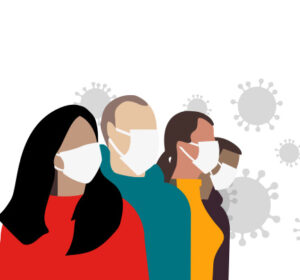 Science, Solutions and Success Stories
Science, Solutions and Success Stories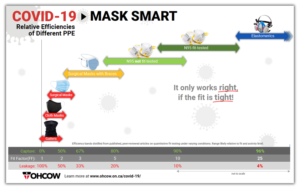
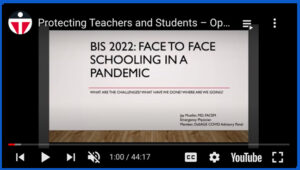
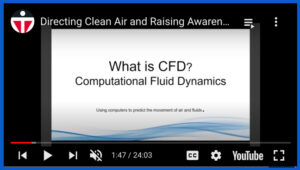
 Commit to C.A.R.E. is a public awareness campaign with a mission to level the playing field of understanding of environmental strategies to combat COVID-19 and other airborne viruses like measles and tuberculosis. The goal of the
Commit to C.A.R.E. is a public awareness campaign with a mission to level the playing field of understanding of environmental strategies to combat COVID-19 and other airborne viruses like measles and tuberculosis. The goal of the  Diesel Exhaust Lung Cancer Relative Risk Calculator
Diesel Exhaust Lung Cancer Relative Risk Calculator
